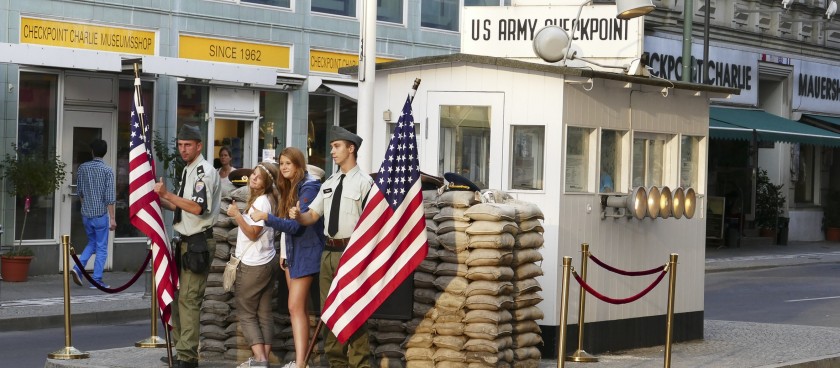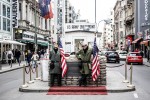- #DE13
- Friedrichstraße 43-45, 10117 Berlin, Germany
- Prices*:
FREE - * - opening and closing times as well as entrance prices, are subject to alterations without notice. Visitors are advised to check before visiting.
- 52.5074450, 13.3903900 Copy to clipboard Copy
-
#History , #Oddities
Checkpoint Charlie, along with Glienicker Brücke (Glienicke Bridge) was the best known border crossing during the Cold War. The sign, which became a symbol of the division of Cold War Berlin and read like a dire warning to those about to venture beyond the Wall – "YOU ARE LEAVING THE AMERICAN SECTOR" – in English, Russian, French and German - stood here. It is today an iconic marker of territorial boundary and political division. Until the fall of the Berlin Wall on November 9, 1989, it signified the border between West and East, Capitalism and Communism, freedom and confinement.
Checkpoint Charlie is a must-see sight in Berlin
The spot remains a must-see sight in Berlin with huge historical and emotional resonance, even accounting for the fact that there is remarkably little left to recall the atmosphere of pre-1989 days. An enormous amount of debating went into deciding what should be left here and preserved for Berliners and visitors to see in the future.
Confrontation at Checkpoint Charlie in 1961
Historically, the site is important because from 1961 to 1990 it functioned as the main entry and departing point for diplomats, journalists and non-German visitors who were allowed to enter East Berlin on a one day visa after exchanging their Deutsch Marks on a one-to-one basis for East German currency. More dramatically, US and Soviet tanks had a close encounter here in October 1961 when J.F. Kennedy and Nikita Khrushchev's tanks faced each other in an acrimonious moment feared around the World as a possible lead up to World War III.
Checkpoint Charlie after the fall of the Wall
The wooden barrack where visitors to the Russian Sector (East Berlin) were once obliged to pass through for vetting was removed. Reconstruction has included a US Army guardhouse and a copy of the original border sign. The original white booth which served as the official gateway between East and West can be seen in the Allierten Museum in Berlin-Dahlem. Cobblestones mark the exact spot of the former border and the poignant photograph by Frank Thiel of an American and Soviet soldier can be seen here. Memorabilia includes the nearby Café Adler, a hotspot for journalists and spies in the past where informers met their counterparts.
The Museum, known as Haus am Checkpoint Charlie, contains the best documentation available on the many escape attempts from East to West. The original Checkpoint sign is exhibited here.
Booming city district at Checkpoint Charlie
Ironically, the New Berlin has turned this area into an entry, rather than departure point, to a new kind of American sector. Today's Friedrichstraße, with its Manhattan style office district, its new buildings by international architects such as Philip Johnson, who created the American Business Center, is the fruit of the millions in corporate investment which rebuilt this central part of Berlin in the 1990s.

